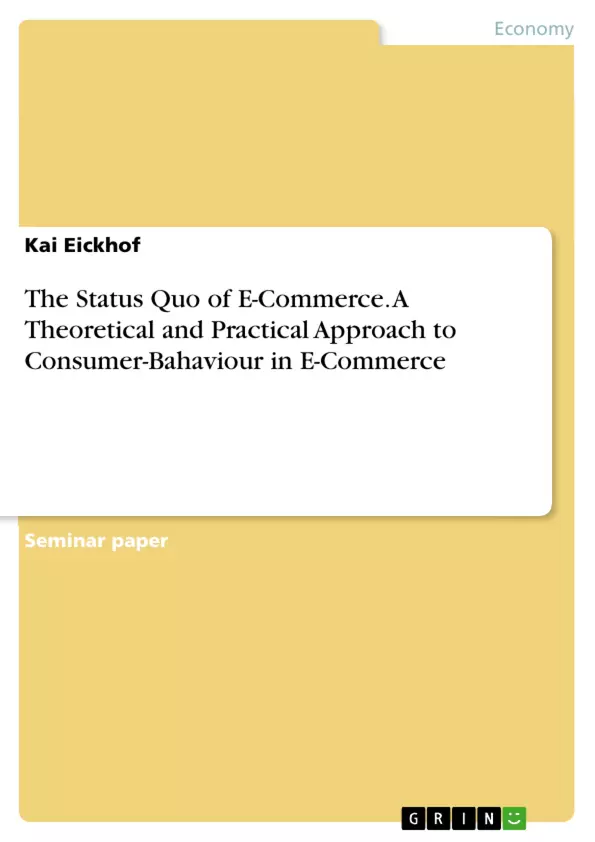Electronic commerce (short: e-commerce) is becoming more and more important in our world. In the beginning, only start-up companies had established online business, but nowadays, even the old economy has realized that e-commerce can be profitable and can make a company operate more efficiently. However, the reasons for or against going into e-commerce should not be discussed in this paper. Many companies have started e-commerce and still today many others try to start online business successfully. As a result, e-commerce has quite a big impact on companies and their customers. This paper shall work out theoretical and practical insights into the behaviour of online consumers.
Therefore, in chapter 2, definitions of e-commerce and consumers’ behaviour are presented and examined. After I have given some definitions to set the framework of this paper, I’d like to discuss the impact of typical internet characteristics on the behaviour of internet users. The focus of the practical approach (chapter 3) is directed at the present status quo of e-commerce in society. From consumers’ point of view advantages and disadvantages of e-commerce were analysed and the following questions were discussed: How many people buy online, who are these people and what are they buying most? Why do some segments not buy online? In order to answer these questions a brief look at several e-commerce studies is necessary. Chapter 4 repeats the main conclusions of this paper.
Table of Contents
- Introduction
- Theoretical Approach
- Definition of E-Commerce & Consumer Behaviour
- Internet Characteristics
- The Status Quo of E-Commerce
- A General Overview
- E-Commerce from Consumers' Point of View
- In General
- Opportunities and Risks
- Statistical Data
- Closing Remarks
Objectives and Key Themes
This paper aims to provide both theoretical and practical insights into the behavior of online consumers. It explores the definition and characteristics of e-commerce and consumer behavior, delves into the current status quo of e-commerce, and examines its impact from the consumers' perspective.
- Defining and understanding e-commerce and consumer behavior
- Analyzing the characteristics of the internet and its influence on online consumer behavior
- Examining the current state of e-commerce in society
- Exploring opportunities and risks associated with e-commerce from the consumer's viewpoint
- Analyzing statistical data to understand online shopping trends and demographics
Chapter Summaries
Chapter 1: Introduction
This introductory chapter sets the scene for the paper by highlighting the growing importance of e-commerce and its impact on businesses and consumers. It uses the analogy of "white water" to describe the rapidly changing business environment brought about by the internet. The chapter emphasizes the internet's ability to facilitate global information sharing and its potential for marketing, advertising, and direct distribution of goods and services.
Chapter 2: Theoretical Approach
Chapter 2 delves into the definition and characteristics of e-commerce and consumer behavior. It explores various interpretations of e-commerce, highlighting its technological, process-driven, and participant-oriented aspects. It then focuses on the Business-to-Business (B2B) and Business-to-Consumer (B2C) segments, which are the most popular e-commerce segments.
Keywords
The main keywords and focus topics of this paper include e-commerce, consumer behavior, internet characteristics, online shopping, B2B, B2C, opportunities, risks, statistical data, and the impact of e-commerce on society.
- Arbeit zitieren
- Kai Eickhof (Autor:in), 2005, The Status Quo of E-Commerce. A Theoretical and Practical Approach to Consumer-Bahaviour in E-Commerce, München, GRIN Verlag, https://www.grin.com/document/45347



